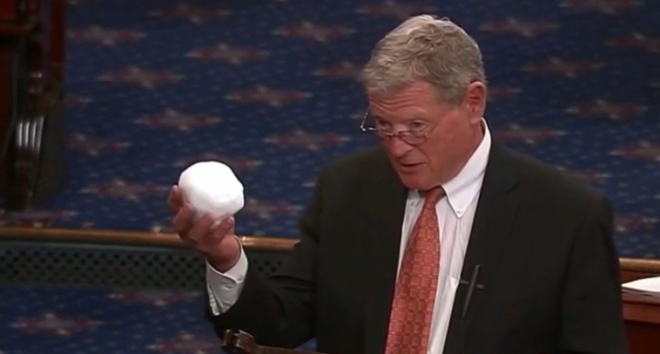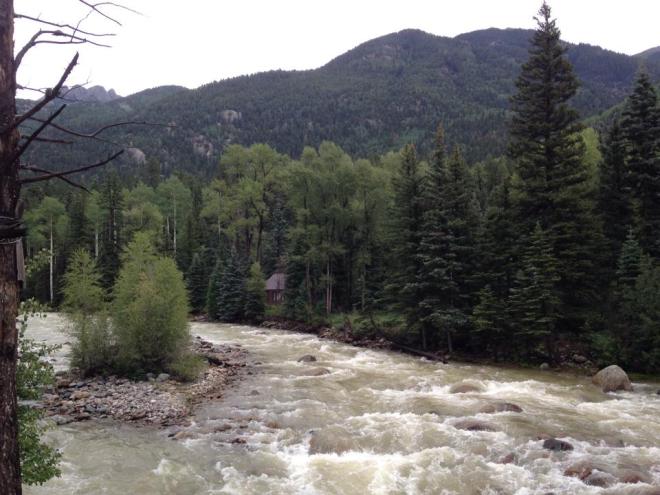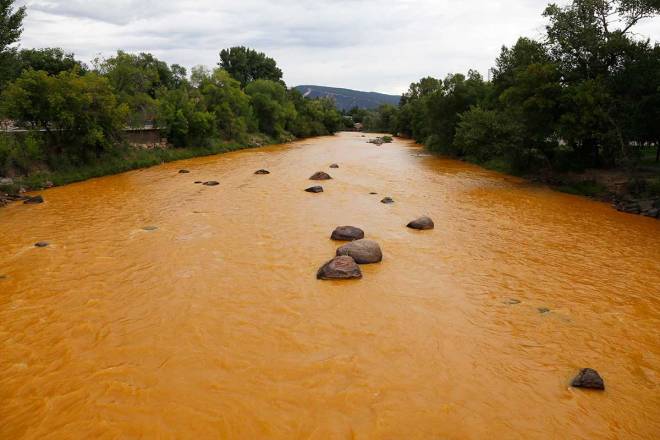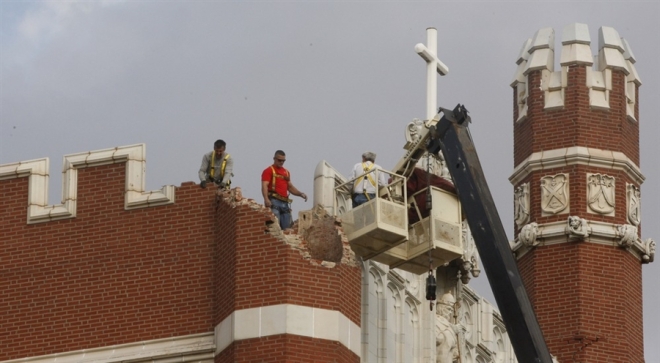My first view of the Animas River was about a year ago. First seeing it in Durango, then taking in its seemingly pristine waters on the train ride to Needleton Station, about halfway to Silverton. There is a pedestrian bridge that allows hikers to cross the river on the way to the trails leading up to Chicago Basin and its rugged, wild and high peaks. On the up and on the way back, I had to stop in the middle of that bridge and just stare at the river as it flowed by.
Carving its way through the rugged San Juans, I couldn’t help but think how awesome it would be to fish those waters, and what it must be like to have a cabin on its shores, listening to the river wash its way over the rocks and fallen trees. Few things are more peaceful.
A year later, I saw the Animas through the eyes of the news. The Gold King Mine, upstream closer to Silverton, dumped some 3 million gallons of sludge poisoned with arsenic, cadmium and lead. The spill turned the river’s waters a putrid shade of yellow-orange.
The cruel irony of this was the fact that the spill was actually caused by a crew working with the Environmental Protection Agency, which was there to find ways to keep the mine from leaking contaminants into nearby Cement Creek.
My initial thought upon learning this news: We did this to ourselves.
The EPA, already a punching bag for business and political interests keen on rolling back environmental regulations, is taking a beating right now. And yes, there should be repercussions for this disaster. Most of the spill has already washed downstream and will dissipate soon enough. But pollution in the riverbed will persist for some time, settling into the sediment to be released anew every time a rock moves or something else disturbs the waterway.
The reality, however, is the Gold King spill is really just a big event in a chain of numerous, smaller instances where leaking mines all over the San Juans have been polluting watersheds in the West for decades. North of Silverton, in Matterhorn Creek, small mines have clouded those waters for some time, and they won’t be clean anytime soon. Other waterways are similarly fouled, forming a long list of bullet points illustrating the long-term effects of extracting wealth from the ground. The Animas looked sick on August 5, but it’s had a small level of toxicity for some time. So have a lot of rivers nearby. Some are “safe,” but I wouldn’t bother filtering drinking water out of Matterhorn Creek anytime soon.
So as it turns out, we’ve been doing it to ourselves for quite some time now.
****
I live in an area of the world where skepticism toward conservation is high. Here in the Southern Plains, the EPA is seen as an agent of big government liberalism out to shut down jobs. There is a strain of positive conservationism among hunters and anglers, but it only goes as far as preserving wild game and fish that are popular among the hunting and fishing crowd. We’ll do what we can to keep a healthy herd of white-tailed deer, but any mention of spotted owls invites immediate disdain. Like a lot of things, we care about the things we see or otherwise value. But anything out of sight is truly out of mind, and that’s what makes conservation so difficult.
Energy is king in the Oil Patch. We prosper during the booms, suffer during the busts, promise to diversify our economy, then live large once the demand – and price – for oil goes up. Oklahoma weathered the Great Recession and proved largely immune because of how high the price of oil rose, and how successful horizontal drilling and fracking technology have become. We don’t see the damage to the land you see at most drilling sites – instead, we see the nice homes in tidy subdivisions and the gleaming cities oil wealth has provided. Again, out of sight, out of mind.
But as it turns out, there is another ecological price we’re paying as a result of the latest oil and gas boom. Fracking uses a lot of water, as well as a lot of chemicals, to break up underground shale formations that trap oil and natural gas deposits. Something has to be done with that wastewater, with the solution being deep wastewater injection wells far underneath the water table and presumably a safe distance away from human contact.
Those wells, however, have frequently come in contact with small fault lines which have been largely dormant for as long as anyone can remember. Until lately.
You don’t think of Oklahoma, or anywhere else in the Midwest, as being a hotspot for earthquakes. But for the last couple of years, Oklahoma is the most seismically active state in the country, even surpassing California. Geologists have long suspected injection wells as the source of the problem, especially when these quakes started doing real damage. Most are nuisances, registering anywhere from magnitude 2-3 on the Richter scale, but a few have gone into the 4 to 5 range. One of these, a 5.5 back in 2011, caused significant damage to homes, roads and buildings in the central portion of the state.
Years later, after intensive study (and intense lobbying to quash such study), the state of Oklahoma and even a few energy companies have finally admitted that the source of the state’s increase in quakes can be tied to human activity.
Every time Oklahoma shakes, we’re reminded that we’re doing this to ourselves.
****
It’s been voiced by some that it is arrogant to believe that man can actually change climate. That, according to this line of thought, is within the power of God alone. If you go too far down that rabbit hole, you’ll find people who believe that climate disaster won’t happen because God won’t allow it. Deeper still, there are those who believe none of it matters because the world is bound for destruction anyway, to be replaced with heaven on earth by the powers on high.
These strains of thought seem to be behind guys like U.S. Sen. Jim Inhofe, Congress’ foremost climate change denier who last winter lobbed a snowball into the Senate chambers in a stunt to illustrate that global warming wasn’t happening.

U.S. Sen. Jim Inhofe shows that this snowball, procured during the winter month of February, is evidence climate change is not happening. (Courtesy)
This is troubling on many levels, because it ignores a high degree of consensus that climate change is happening, and we’re causing it. High altitude and polar glaciers are in retreat, island nations are losing land and sea temperatures keep going up at rates not seen before. Carbon dioxide levels in the atmosphere are spiking well beyond what’s been measured before, and those sea water temps are rising at rates not explained by things like natural cycles, sunspots, volcanoes, or any other diversionary alternative theories as to why these pesky climate problems keep cropping up.
At the root of it are two things: The world is burning a lot of gasoline, diesel, oil and coal, and to switch gears to where we are consuming less of these things is extremely inconvenient.
Curbing the burn also means a lot of people would stand to make less money, and if you want to meet the highest degree of resistance from anyone, hamstringing their ability to earn some coin will do it.
People have to be realistic about fossil fuels. They aren’t going anywhere, anytime soon. Airplanes, ships, cars, trains and trucks all need that fuel to move. The computer, tablet or mobile phone on which you’re reading this has parts made from refined petroleum products. So does the car you drive to work, the bike you take to the trail and the shoes on your feet, not to mention your clothes and just about any other product you use and consume. The very food you eat is almost all dependent on energy derived from oil, gas and coal.
And in conversations with my brother-in-law Mark, a longtime petroleum engineer, everyone in the energy industry knows it’s in their best interest to operate as cleanly, safely and responsibly as possible. A few bad actors cause a lot of headaches for more responsible companies that are trying to do it right. There are a lot of decent people making honest livings in energy.
But at some point, we’re going to have to grow up when it comes to things like clean water, clean air and climate change. We can’t keep ignoring the fact that we do spoil our water, we do make the ground shake and we do cause temperatures to rise. The conversation should not be if we are hurting ourselves, but rather, what can we do to transition into something more sustainable and less damaging.
Otherwise, we’ll be left looking back at another disaster, shaking our heads, and wondering why we keep up this cycle of self destruction.
Bob Doucette



